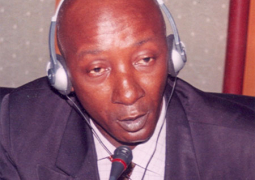All this, of course, requires the ease of movement and transportation. A new grid of highways, an increase in air-travel destinations, and an expansion in other routes of navigation are only some of the changes that are required. One can only imagine twelve-lane highways between and among the major Islamic cities of interest, where people will have the freedom to move between there holy cities without restriction, or a reward program offering sincere and hard –working students, professionals and civil servants travel discounts to destinations across the Islamic world. Of course, like the previous step, political will and courage is needed for this to succeed. Governments in Islamic lands will have to drop visa requirements when Muslims want to visit.
No doubt, governments of the types that exist today are not going to favor this free and sizable flow of people from one country to the next. Unfortunately, many of the regimes today much prefer wealthy Western tourists traveling in their lands than their Muslim counterparts. But Muslim minds are going to have to think along such lines in order to put social pressure on these types of administrations.
The Hajj
The next channel for ta ‘aruf is the hajj. This "institution" is one decreed by Allah (swt), the Most Gracious, Who designated this annual occasion as an open-ended meeting for all types of Muslims from the far corners of the earth. Before nationalism, sectarianism and our modern-day corporate culture, the hajj was the Islamic "melting pot" and the grand occasion of ta ‘aruf. It was an open university for religious, social, economic and political inquest and appeal.
This aim of the hajj dates back to the time of the Prophet (s), the first generation of Muslims, and Muslims who never lost sight of this central Islamic concern. In fact, the Prophet(s) used the opportunity of hajj to deliver his farewell speech (khutbatul hajj al-wada’) during his last hajj where he elucidated on the teaching and principles of Islam. It was the responsibility of the successors of the Prophet(s) to continue the same tradition during this season.
From the beginning, pilgrims would get to know each other and acquaint themselves with their fellow Muslims, no matter what part of the Islamic cultural mosaic they belonged to. But it wasn't just the average Muslims who would gather for the pilgrimage; the hajj also brought together various individuals in leadership positions. In fact, it was during the hajj that the Caliph would have the opportunity for personal and face-to-face meetings with other governors of the Islamic empire, with the aim of facilitating shura (decision-making interaction) and the exchange of administrative opinion that concerned the Islamic public interest. The Islamic government would solicit advice ad counsel for future administrative decision in general from this grand congregation of hajj.
The hajj was also a meeting place of ideas, a spectacular arena of opinions and a university the likes of which the world has never known. Scholars of hadith would meet during the hajj to compare their narration of the hadith, while students seized the opportunity to meet with these renowned scholars. The fuqaha gather each year during this time to compare and contras their "better judgment" with their peers. If there was something called the "socialization of knowledge" it was there and then in the way that people interacted during the hajj. Pilgrims would not be prohibited from probing the intellectual depths of their own colleagues. In this break-the-barrier get-together, we have the example of Abu Hanifah, who after having an intellectual discussion with Malik during the blessed opportunity of hajj, would describe him with the words, "ma ra aytu'asra 'a minhu bi jawabi sahih" ("I did not see anyone faster than him in responding correctly"). From that same encounter, Malik's description of Abu Hanifah is equally complimentary: "innahu la faqih" ("indeed, he is a scholar").the hajj was also where Abu Hanifah would meet Imam Muhammad al-Baqir and his son Imam Ja 'far al-Sadiq, and where al-Shafi' I would encounter Ahmad ibn Hanbal.
The long and short of it is that the hajj was the stimulating and extraordinary public meeting place for open discussion. Unlike today, Islamic ta 'aruf was an essential component of this pilgrimage. If those first contemporaries combined their rituals with their responsibilities, their devotion with their deeds and their relationship with Allah with their relationship with each other, then surely it can be repeated today.
The reorganization of the hajj is going to need an Islamic government that will make this possible. Unfortunately, the current laws and policies serve only to alienate the haramayn in
The hajj is so important and crucial for Islamic familiarity, togetherness and understanding that its meaning and cogency in our social selves must be reconstructed. The firs thing we have to realize is that it will take time for us to know each other. We cannot come together in a day or two nor a week or two, during what the administration may officially define as "the hajj period" and expect an element of ta ‘aruf therein. Perhaps for this reason, as well as other, the hajj has been defined, according to the Quran as a matter of months:
The hajj is in months well-known.
For how are we to know each other if we are stampeded into and then stamped out of the hajj? Who is willing to open up the time-span of the hajj? Who is willing to challenge the official policies that have chained
Beyond the hajj, we have the umra. This is the minor hajj which may be preformed by willing and able Muslims at any point throughout the year. The umra is a constant contributor to Islamic inter-familiarization and strategic unity of purpose. Year-round, a stream of people travel to
The hajj and umra in our current times are anemic. It is a sad fact that there are only one or two airports to receive and send-off the flow of people who flock to this sacred sanctity, that there are only four-lane highways to and from Mecca and Medina, instead of fourteen-lane ones, that there are-up to last year- no train transportation routes augmenting the other modes of transportation to and from these holy sites, and that there is only one seaport to process those who travel by sea. This is yet another manifestation of how the cities of
Sometimes is fundamentally wrong with us when Muslims become the victims of massacres in countries within Asia, Africa and
To be continued.
Read Other Articles In Article (Archive)
King Leopold's Ghost
Jun 26, 2009, 6:55 AM



